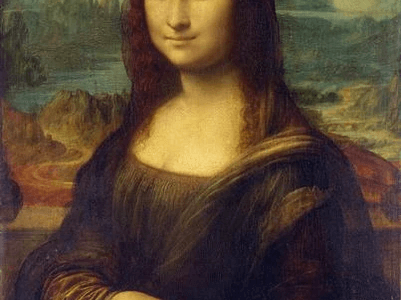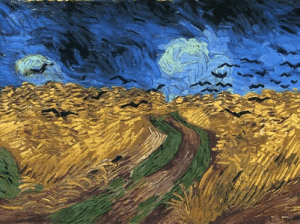Title of Artwork: “Mona Lisa”
Also Known As ‘Portrait of Lisa Gherardini, wife of Francesco del Giocondo’


Artwork by Leonardo da Vinci
Year Created 1503 – 1519
Summary of Mona Lisa
The Mona Lisa, painted by Leonardo da Vinci between 1503 and 1519, is widely considered to be one of the most famous paintings in the world.
The portrait’s allure stems from the intrigue surrounding the identity of its subject; Mona Lisa’s mysterious grin exudes sensuality and happiness.
This was achieved by sfumato, Leonardo’s painting method that smoothed the transition between hues.
The Mona Lisa is considered the gold standard of portraiture because of the depth and intricacy of her expression. The portrait’s secret past only added to its allure, with scholars debating everything from the identity of the sitter to the motivations of the commissioning party to the length of time Leonardo spent on the painting to its eventual arrival in the French royal collection.
All About Mona Lisa
The sitter is often believed to be Lisa del Giocondo, the wife of the rich Florentine merchant Francesco del Giocondo. This is why the artwork is often referred to as “La Gioconda.” Giorgio Vasari, a Renaissance art historian, is credited with the painting’s first identification.
Vasari, in his biography of Leonardo published in 1550, praised the masterwork that was Leonardo’s 1503–1506 portrait of Lisa del Giocondo.
The discovery made in 2005 at the University of Heidelberg revealed convincing fresh evidence that verifies Vasari’s thesis, which had been questioned by many.
Leonardo’s contemporary, Niccol Machiavelli’s secretary and aide Agostino Vespucci, wrote a marginal note in a 1477 volume by the Greek philosopher Cicero.
Vespucci writes highly of Leonardo’s talent and compares him to the Greek painter Apelles in a letter dated October 1503, in which he also mentions that Leonardo is currently at work on a painting of Lisa del Giacondo.
Half-length portraiture of a sitter is very new to Italian art, but the Mona Lisa is the first known example. Leonardo introduced a new creative formula in which the subject is depicted in half-length while seated in an armchair in front of a loggia, a gallery or room having one or more open sides.
Leonardo was able to depict a fantastical setting for the portrait thanks to the loggia. This remarkable innovation affected Leonardo contemporaries: Raphael borrowed the composition and stance in his picture Young Woman with Unicorn (ca. 1506). (ca. 1506).
Portrait of Barbara van Vlaendenbergh (ca. 1470–1472) and Man with a Roman coin by Hans Memling are just two examples of the Flemish portraiture of the second half of the 15th century to which Leonardo owed a great deal of inspiration (ca. 1480).
King Francis I of France, Leonardo’s patron, commissioned Mona Lisa in his later years, and the painting eventually found its way to the French royal collection.
The image has been a centrepiece of the Louvre’s collection since it was first displayed there in 1797. The theft of the picture was discovered by Louvre staff on the morning of August 22, 1911.
Vincenzo Peruggia, an employee of the Louvre, was fingered as the culprit two years later. Even though he was caught trying to sell Leonardo’s masterpiece in Florence, Peruggia insisted that his actions were motivated by patriotism because he believed the picture rightfully belonged in Italy.
The Mona Lisa was celebratedly returned to the Louvre in 1914, after having been seen all over Italy upon its rediscovery.
Information Citations:
En.wikipedia.org, https://en.wikipedia.org/.
Recommend0 recommendationsPublished in Art History, Artworks, Resources







Responses